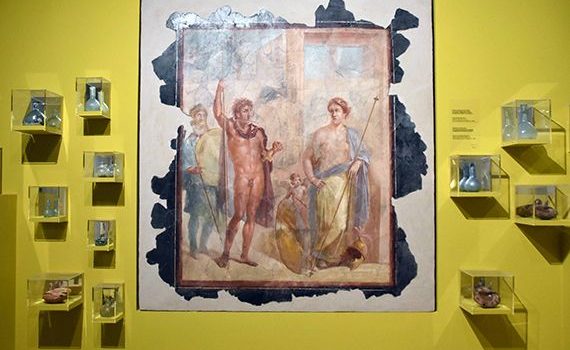In the gardens of the House of the Golden Bracelet and the House of Maius Castricius samplings were taken over the period spanning from 2014- 2016 to understand the function of this sector located outside the walls and in a higher position with respect to the adjacent garden of the House of Marco Fabio Rufo. The investigations conducted in the House of the Golden Bracelet confirmed the phases of use and the decorations of the areas around the garden, dating them between the height of the Augustan Age (corresponding to the occupation and crossing of the external line of the wall) and the Flavian Age (associated with the last painting decoration of the surrounding area).
The most ancient stratigraphies date back to the first decades of the I Century B.C. and show that the use of this section outside the walls was linked to the Porta Occidentalis and the external sanctuary area dedicated to a female deity (Minerva).
The samplings in the area of the garden of the House of Maius Castricius were taken at right angles to the defence walls in order to investigate the phases of use of this portion outside the city, characterized by the downward slopes which enabled the disposal of the meteoric water coming from inside the city. The first data from the excavations confirmed that this sector was used between the IV Century B.C. and 79 A.D.

Insula Occidentalis
Umberto Pappalardo,Mario Grimaldi (Suor Orsola Benincasa University of Naples)
APP contact person Silvia Martina Bertesago
The excavations in the garden of the House of Marco Fabio Rufo revealed that the area outside the walls was in use from the III Century B.C. This is proved by the construction of the city walls, by the presence of a Porta Occidentalis in a public access for transits to and from the city, and by a sanctuary area dedicated to a female deity, testified by architectonic terracottas, coroplastics and ritual objects (perirrhanteria, louteria and thymiateria).

